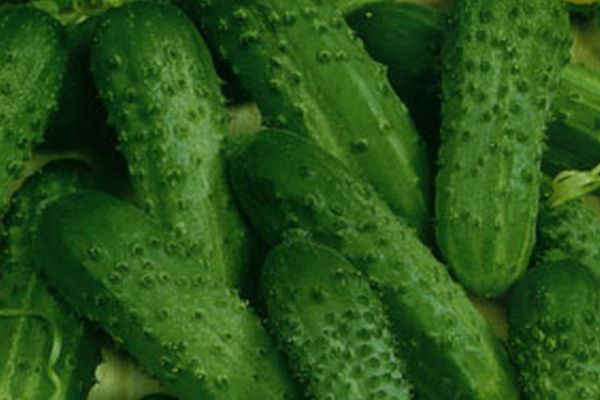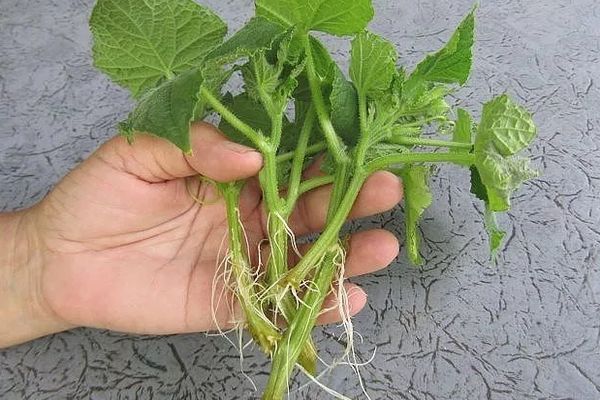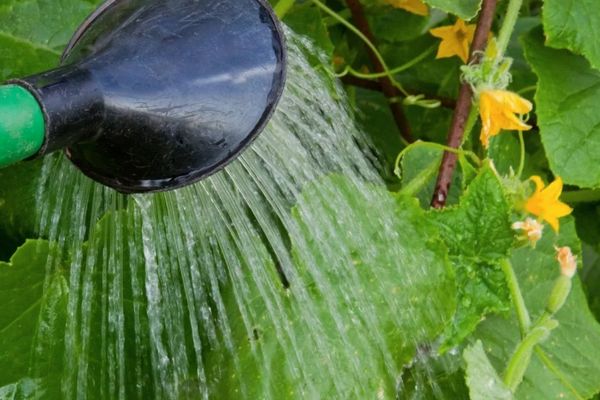Content:
This variety not only tastes great. Cucumber Swag can be eaten fresh, salted or canned. Moreover, its cultivation is not too time-consuming and difficult. This is a great choice for summer cottages, personal plots and small farms.
general information
This variety is included in the State Register of the Russian Federation with a recommendation for cultivation in summer cottages, in small farms.
The variety is the result of technological development. In order to breed it, a stepwise crossing of one of the Japanese varieties called Tokiwa Zhibai was carried out with Far Eastern 27 and with a breeding sample of 0.1723.
This variety is a hybrid of the F1 type, which is the product of crossing two or more varieties, inheriting their best characteristics. Along with this, the variety gains energy and vitality.
Description of the variety of cucumber Khabar
The fruits are gherkin type cucumbers. The average length of one specimen is 9.5 cm. Its weight is usually about 80 g. The shape of the fruit is elongated-cylindrical. The skin is large lumpy, with dark pubescence. The diameter of cucumbers, as a rule, does not exceed 4 centimeters.
One of the distinguishing features of the variety is its long fruiting period. The first crop is harvested 43 to 46 days after sowing.
The cucumber has an excellent taste, which does not feel bitterness. It has a thin skin. When eaten, it crunches, while the seeds are not felt.
The variety belongs to the early maturing. Pollination takes place with the help of bees.
The bush is relatively tall. The nature of its branching is average.
The use of the Khabar variety can be characterized as universal:
- you can eat it;
- it tastes great if salted;
- well suited for conservation.
The yield per square meter reaches 4 kilograms throughout the year.
How to grow properly
Preparing for disembarkation should begin in the fall. In this case, you need to carefully inspect the site and get rid of debris and weeds. After that, dig up the ground.
The variety does not like acidic soil, if it is exactly like this on the site, liming is recommended.
In the spring, in April, it is necessary to dig this area again. After that, the land is leveled.
Planting seeds
When planting, you need to be careful about the selection of varietal seeds.
You should also avoid using low quality graded material.
When planting, it is not recommended to deepen the seeds by more than 2 cm. You can sow them in boxes or peat tablets. Moisten the soil well and cover with a foil until shoots appear.
Planting in the ground is possible after each sprout from the seedlings forms at least 4 leaves. This happens in late May or early June.
Planting seedlings in the ground
Although the plant is able to confidently tolerate slight cold, it is believed that it is better not to risk it when planting. If dramatic weather changes are expected in summer, it is recommended to grow cucumbers in greenhouses.
A gap of at least 50 cm must be left between the beds. When the seedlings are strong, they must be thinned out, leaving the healthiest ones. At the same time, no more than four plants remain on one meter of the bed.
When caring for a bush, you need to consider several important rules:
- The number of dressings for the bush should not be more than 5.
- It is necessary to use organic and mineral fertilizers alternately, changing their types.
- Need regular watering. Before flowering, it is enough to water no more than 1 time per 5 days. At the same time, no more than 4 liters of water is enough for one square meter. As soon as the time for fruiting and flowering comes, the watering regime changes. It is now recommended to carry out it every 3 days. You need to spend no more than 10 liters per square meter. If the rules are violated, this can lead not only to a decrease in the yield of the variety, but also to a disease of the cucumbers.
Water for irrigation must be used warm and settled. You need to pour directly under the root, without interfering with the formation of bushes.
During cultivation, measures must be taken to protect the cucumbers from diseases and pests.
When planting, you need to take into account the quality of the soil. It is possible to grow a cucumber Khabar only on fertile soil.
If pests appear on the beds, it is necessary to carry out appropriate spraying in a timely manner.
Advantages and disadvantages of the variety
Cucumber Khabar has a number of features that distinguish this variety from others.
Here are its advantages:
- The taste of the cucumber is devoid of bitterness.
- This variety has excellent yields.
- Good preservation is another important advantage of the Khabar variety. It can be stored for a long time without loss of quality.
- It is distinguished by a relatively short ripening period.
- Refers to self-pollinated crops.
- It has good resistance to negative environmental influences.
- There is a possibility of growing the variety both in the open field and in greenhouses.
You can also note the disadvantages inherent in cucumbers of this variety:
- There are thorns on the surface of the cucumbers.
- The plant is demanding on the quality of the soil.
- Cucumber Khabar belongs to the category of thermophilic varieties.
Providing the conditions for growing the Khabar variety, you can get a large harvest of cucumbers that have a great taste.

















